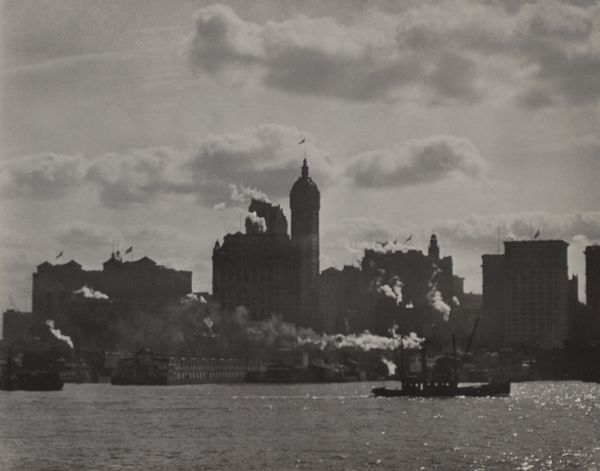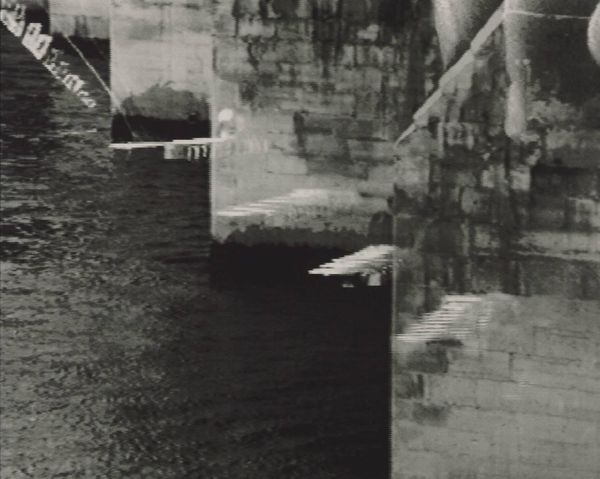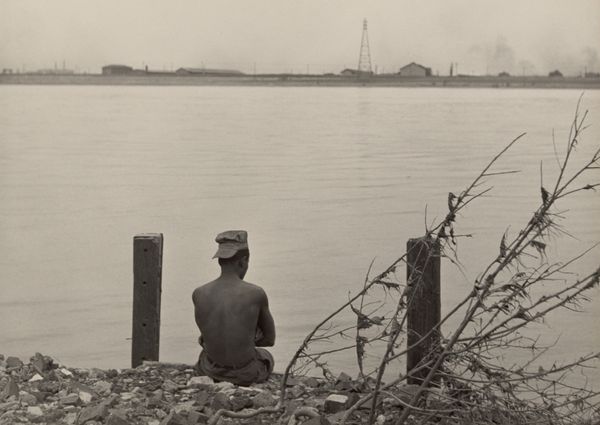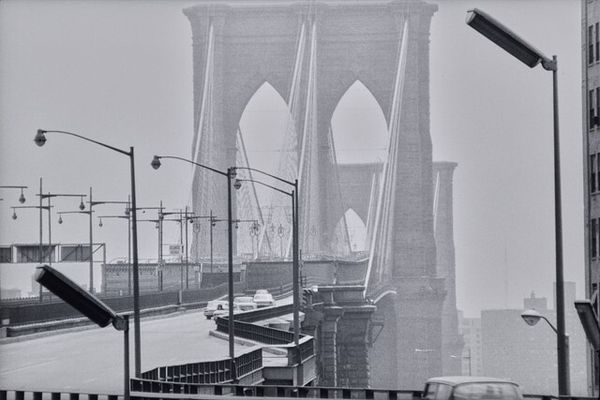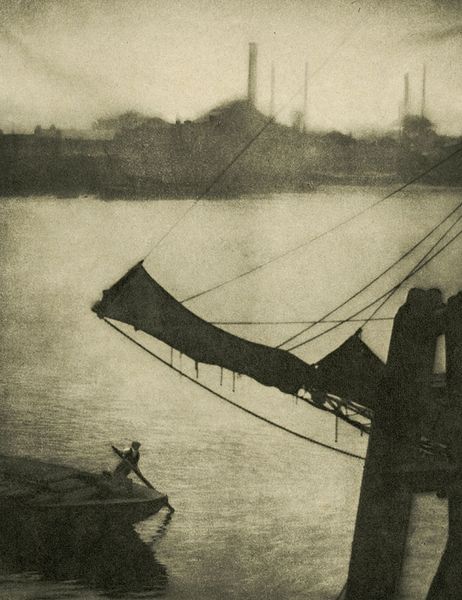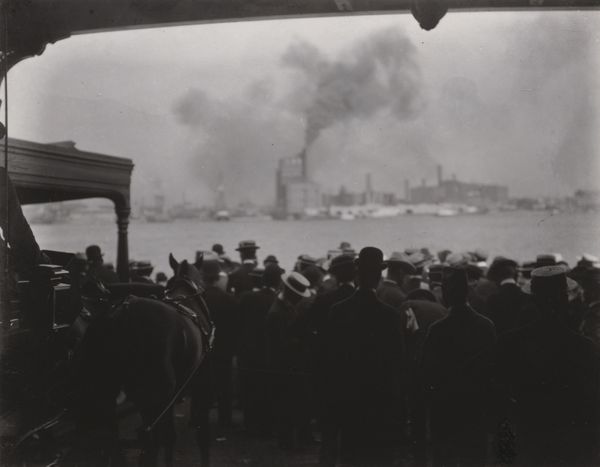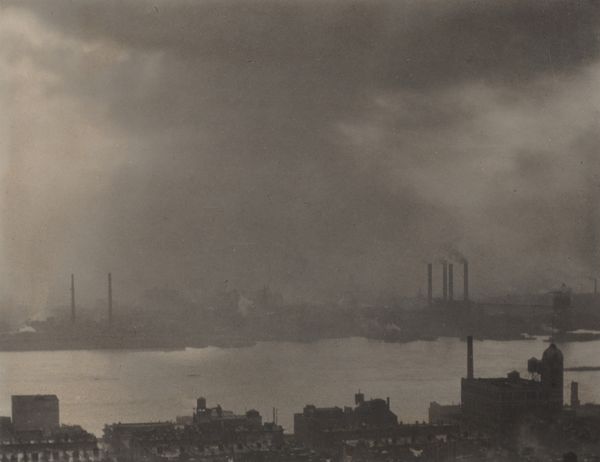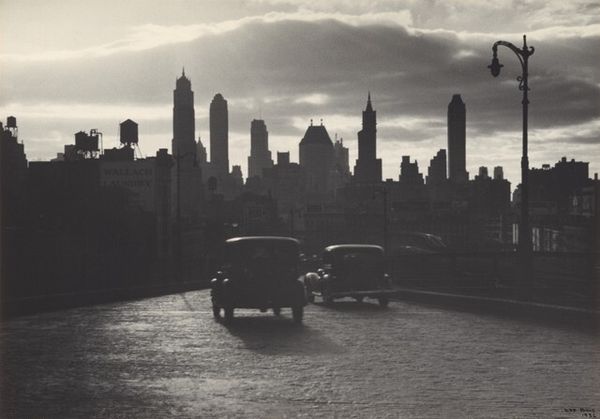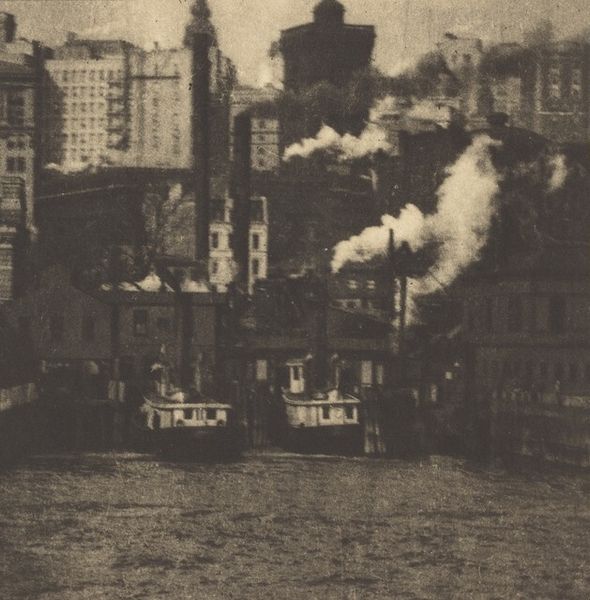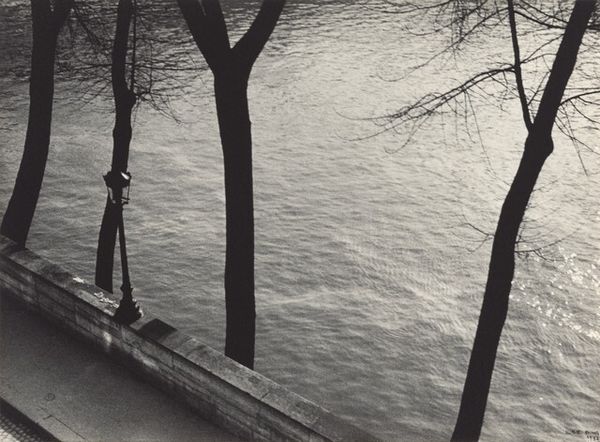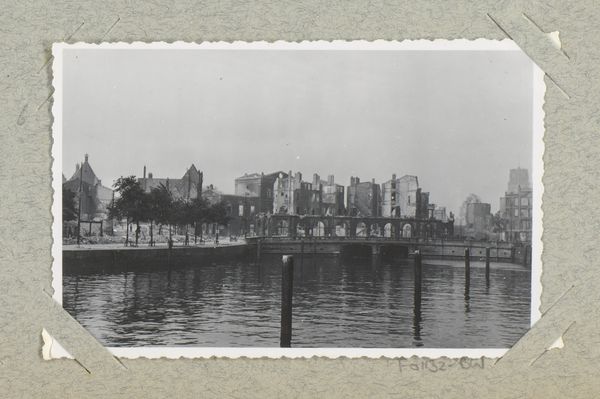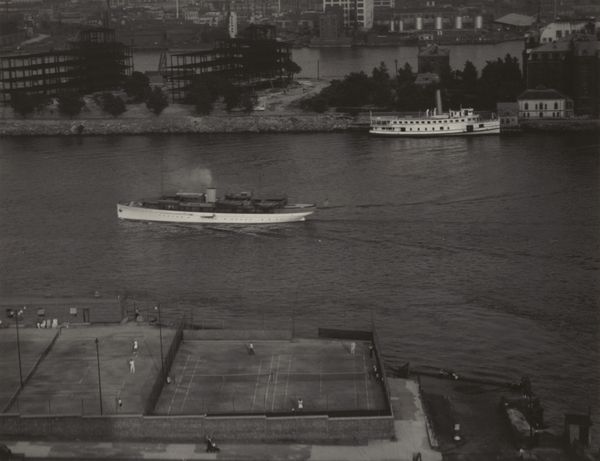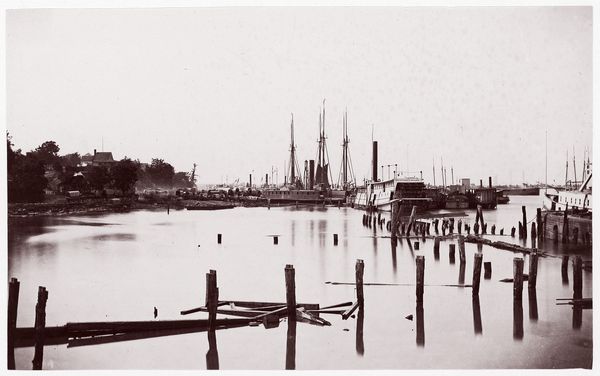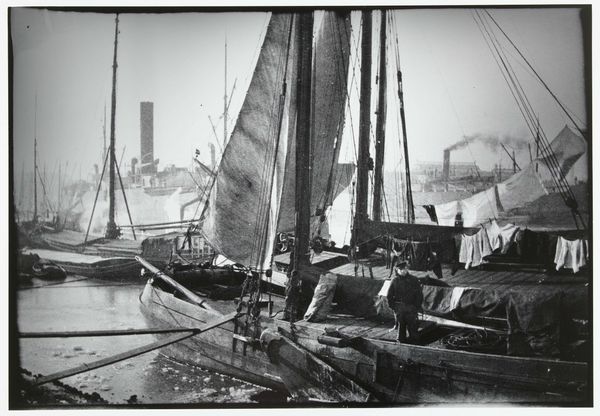
Dimensions: sheet (trimmed to image): 11.2 × 9.2 cm (4 7/16 × 3 5/8 in.)
Copyright: National Gallery of Art: CC0 1.0
Curator: Oh, it feels so melancholy and industrial somehow. What are we looking at here? Editor: This is "The City Across the River," a gelatin silver print by Alfred Stieglitz, dating possibly from between 1910 and 1934. Curator: Gelatin silver print, yes, that lends itself to such stark contrast. It’s almost ghostly. The city feels so far away, like a dream receding. Editor: The photograph presents a fascinating study of urban expansion and environmental impact in early 20th-century America. Look at the vantage point; we are positioned on the cusp of the water's edge. The foreground shows raw materials, and just beyond that, industry encroaches into the natural space of the river itself. Curator: Exactly. All that rough-hewn timber in the foreground--so tactile and close--and then the hazy city looming like a promised land. Do you think the smoke adds to the emotional distance? Editor: Undeniably. The plumes of smoke from the steamboat simultaneously signify progress and environmental degradation. It underscores the complexities of modernity: advancement comes at a cost. This echoes debates within the artistic and activist circles of Stieglitz's time. Curator: It also kind of dissolves any clarity—visually, sure, but also metaphorically, right? Like progress itself is obscured, hard to see clearly, even when you think you're right on top of it. Stieglitz wasn't always a champion of progress; he valued wilderness, even romanticized it a bit. Editor: His pictorialist roots and his engagement with modernism always pulled him in different directions. "The City Across the River" functions as a subtle commentary on the shifting relationship between the organic and the manufactured worlds. Curator: It definitely speaks to a kind of transition—a longing perhaps. Editor: Absolutely. A pivotal moment captured in monochrome. Curator: This has reminded me to look for those complicated messages nestled within simple landscapes. Editor: And for me, a confirmation of art’s enduring capacity to speak across generations about social change and its reverberating impact.
Comments
No comments
Be the first to comment and join the conversation on the ultimate creative platform.
